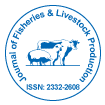Unsere Gruppe organisiert über 3000 globale Konferenzreihen Jährliche Veranstaltungen in den USA, Europa und anderen Ländern. Asien mit Unterstützung von 1000 weiteren wissenschaftlichen Gesellschaften und veröffentlicht über 700 Open Access Zeitschriften, die über 50.000 bedeutende Persönlichkeiten und renommierte Wissenschaftler als Redaktionsmitglieder enthalten.
Open-Access-Zeitschriften gewinnen mehr Leser und Zitierungen
700 Zeitschriften und 15.000.000 Leser Jede Zeitschrift erhält mehr als 25.000 Leser
Indiziert in
- Index Copernicus
- Google Scholar
- Sherpa Romeo
- Öffnen Sie das J-Tor
- Akademische Schlüssel
- Elektronische Zeitschriftenbibliothek
- RefSeek
- Verzeichnis der Indexierung von Forschungszeitschriften (DRJI)
- Hamdard-Universität
- EBSCO AZ
- OCLC – WorldCat
- Gelehrter
- SWB Online-Katalog
- Virtuelle Bibliothek für Biologie (vifabio)
- Publons
- Euro-Pub
- Universität Cardiff
Nützliche Links
Open-Access-Zeitschriften
Teile diese Seite
Abstrakt
Effects of Different Dietary Energy and Protein Levels at Fixed Slaughter Weight on Performance and Carcass Characteristics of Arabi Fattening lambs
Dabiri N
Forty eight Arabi fattening lambs with similar initial weight (18.72 ± 0.604 Kg) and age ( 90 ± 5 day) from a flock of Arabi sheep of Ramin Agricultural and Natural Resources University werer andomly allocated to six dietary treatments in a 2 × 3 factorial experiment using completely randomized design. The treatments included low (EL=2.4 Mcal/KgDM ME), medium (EM=2.6 Mcal/KgDM ME) and high (EH=2.8 Mcal/KgDM ME) levels of dietary energy in combination with low (PL=16% cp) and high (PH=18% cp) levels of dietary protein. The body weight (BW), average daily gain (ADG), average daily feed (ADF) and feed conversion ratio (FCR) of lambs were measured two weeks interval until the end of experiment. Carcass components were recorded at the end of trial. The ADG of lambs in EH, EM and EL treatments were respectively 271, 244 and 206 g/d and differences between them were significant (p<0.05). The same trend was found for feed efficiency. The ADG was also significantly greater (p<0.05) for lambs fed diets containing 18% protein than for lambs fed diets containing 16% protein (254 vs. 216 g/d). The FCR also had the same trend (4/47 vs. 5/37). The differences for other traits for dietary containing different Energy and Protein levels was not significant. The interactions between protein and energy treatment levels were not significant for none of traits. In general, with increasing level of energy the performance of lambs particularly for ADG and FCR was improved for either of protein levels. The lowest ADG (150 g/d) and worst FCR (6/36) was belong to the treatment containing the lowest energy and protein levels and differences between them and other treatments were significant (p<0.05).
Zeitschriften nach Themen
- Allgemeine Wissenschaft
- Biochemie
- Chemie
- Genetik und Molekularbiologie
- Geologie und Geowissenschaften
- Immunologie und Mikrobiologie
- Klinische Wissenschaften
- Krankenpflege und Gesundheitsfürsorge
- Landwirtschaft und Aquakultur
- Lebensmittel & Ernährung
- Maschinenbau
- Materialwissenschaften
- Medizinische Wissenschaften
- Pharmazeutische Wissenschaften
- Physik
- Sozial- und Politikwissenschaften
- Umweltwissenschaften
- Veterinärwissenschaften
Klinische und medizinische Fachzeitschriften
- Anästhesiologie
- Augenheilkunde
- Betrieb
- Dermatologie
- Diabetes und Endokrinologie
- Gastroenterologie
- Genetik
- Gesundheitspflege
- Immunologie
- Infektionskrankheiten
- Kardiologie
- Klinische Forschung
- Medizin
- Mikrobiologie
- Molekularbiologie
- Neurologie
- Onkologie
- Pädiatrie
- Pathologie
- Pflege
- Toxikologie
- Zahnheilkunde

 English
English  Spanish
Spanish  Chinese
Chinese  Russian
Russian  French
French  Japanese
Japanese  Portuguese
Portuguese  Hindi
Hindi